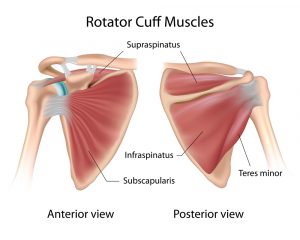[fusion_builder_container hundred_percent=”no” equal_height_columns=”no” menu_anchor=”” hide_on_mobile=”small-visibility,medium-visibility,large-visibility” class=”” id=”” background_color=”” background_image=”” background_position=”center center” background_repeat=”no-repeat” fade=”no” background_parallax=”none” parallax_speed=”0.3″ video_mp4=”” video_webm=”” video_ogv=”” video_url=”” video_aspect_ratio=”16:9″ video_loop=”yes” video_mute=”yes” overlay_color=”” video_preview_image=”” border_size=”” border_color=”” border_style=”solid” padding_top=”” padding_bottom=”” padding_left=”” padding_right=””][fusion_builder_row][fusion_builder_column type=”2_3″ layout=”1_1″ background_position=”left top” background_color=”” border_size=”” border_color=”” border_style=”solid” border_position=”all” spacing=”yes” background_image=”” background_repeat=”no-repeat” padding_top=”” padding_right=”” padding_bottom=”” padding_left=”” margin_top=”0px” margin_bottom=”0px” class=”” id=”” animation_type=”” animation_speed=”0.3″ animation_direction=”left” hide_on_mobile=”small-visibility,medium-visibility,large-visibility” center_content=”no” last=”no” min_height=”” hover_type=”none” link=””][fusion_title hide_on_mobile=”small-visibility,medium-visibility,large-visibility” class=”” id=”” content_align=”left” size=”1″ font_size=”” line_height=”” letter_spacing=”” margin_top=”” margin_bottom=”” margin_top_mobile=”” margin_bottom_mobile=”” text_color=”” style_type=”default” sep_color=””]January 2019 Newsletter[/fusion_title][fusion_separator style_type=”default” hide_on_mobile=”small-visibility,medium-visibility,large-visibility” class=”” id=”” sep_color=”” top_margin=”” bottom_margin=”” border_size=”” icon=”” icon_circle=”” icon_circle_color=”” width=”” alignment=”center” /][fusion_text columns=”” column_min_width=”” column_spacing=”” rule_style=”default” rule_size=”” rule_color=”” hide_on_mobile=”small-visibility,medium-visibility,large-visibility” class=”” id=””]
Jeremy – How to kickstart January?
Inflammation, Immune System and Chronic Disease
Meet our January Client of the Month Nikki and how Chiropractic has helped her to stay super active.
January offer
Catch up with Jeremy, Lauren and our new Chiropractor Antonio.
[/fusion_text][fusion_text columns=”” column_min_width=”” column_spacing=”” rule_style=”default” rule_size=”” rule_color=”” hide_on_mobile=”small-visibility,medium-visibility,large-visibility” class=”” id=””]Please click here to find a PDF version of our January Newsletter[/fusion_text][fusion_text columns=”” column_min_width=”” column_spacing=”” rule_style=”default” rule_size=”” rule_color=”” hide_on_mobile=”small-visibility,medium-visibility,large-visibility” class=”” id=””]
How to kickstart January
I know the feeling, 2nd January, it’s dark, Christmas is over, and you probably have eaten too much over the Christmas period. So how do we get back on track and getting healthy? Let’s also get one thing straight, we are all allowed to over indulge at certain periods in the year and Christmas is one of them, 80:20 rule. 80 good; 20 not so good, as long as you are in control of this then it makes it 10x easier to be in control of the journey back to optimum health.
- Set weekly goals – this can be anything from taking 3 walks per week of 4k, walking 10,000 steps per day, drinking 5 glasses of water per day.
- Set yourself a reward when you achieve your goals, make sure when you hit your goal that you reward yourself with a treatcinema, new jacket.
- If you go off track don’t beat yourself up-try and think of the journey to health month by month rather than day by day. You can’t be good every day.
- Take the stairs, get off the bus or train one stop early.
- Intermittent fast-pack your meals in to a 8 hour window-for example don’t eat anything till lunchtime 12pm then eat dinner before 8pm. not for everyone but can promote satiety and feelings of fullness.
Inflammation, Immune System & Chronic Disease
Underlying many different diseases and conditions is the process of inflammation. This process connects conditions as varied as cancer, infections, heart disease, and autoimmune diseases. Understanding more about inflammation and its effects on the body may help us understand more about these conditions – and treat them more effectively. Of particular interest is the effect of inflammation on the immune system.
What Happens During the Inflammation Process?
Inflammation is the natural biological response of the body to stimuli such as pathogens, irritants, and damaged cells. These are all perceived by the body to be harmful. The immune system kicks in and acute inflammation starts to repair damaged tissues. This usually results in dilation of the capillaries, redness, heat, pain and swelling. If this response is prolonged, it is termed ‘chronic’ inflammation. This is potentially dangerous and can lead to severe tissue damage and disease. The inflammation can, in fact, become a “disease process” itself and result in disorders such as asthma, autoimmune diseases, and inflammatory bowel syndrome to name just a few. These conditions are often related to more serious chronic conditions such as heart disease, liver disease, arthritis, Alzheimer’s and diabetes. Increasingly, these diseases are considered “inflammatory” diseases.
Immunosuppression and Its Consequences
In 2012, scientists in Israel studied the connection between inflammation and suppression of the immune system. They noted:
“At a certain stage of each of these diseases, while the chronic inflammation proceeds, some key players of the immune system become immunosuppressed as natural killer (NK) cells and T cells.”
Furthermore, their findings led the scientists to question some of the conventional medical approaches taken towards treating the major “inflammatory” chronic diseases:
“A substantial body of evidence supports the notion that the development of a suppressive environment during chronic inflammation limits the success of immune-based and conventional therapies, skewing the balance in favor of a developing pathology.”
The body’s natural defence mechanism (inflammation) actually creates the conditions where pathological processes, such as those found in chronic diseases, are able to develop. This suggests that we need to reconsider approaches to intervening in these diseases:
“…appropriate, well-designed and fine-tuned immune interventions that could resolve inflammatory responses and associated immunosuppression could enhance disease regression and reinforce successful responses to a given therapy.”
With more research, this could open up new avenues in the fight against chronic disease. Meanwhile, it should also get us thinking about ways in which we can discourage inflammatory responses in the body – through diet, exercise, and other lifestyle choices.
Resources
Kanterman J, et al. New insights into chronic inflammation-induced immunosuppression. Semin Cancer Biol (2012), doi:10.1016/j.semcancer.2012.02.008
[/fusion_text][/fusion_builder_column][fusion_builder_column type=”1_3″ layout=”1_3″ spacing=”” center_content=”no” link=”” target=”_self” min_height=”” hide_on_mobile=”small-visibility,medium-visibility,large-visibility” class=”” id=”” background_color=”” background_image=”” background_image_id=”” background_position=”left top” background_repeat=”no-repeat” hover_type=”none” border_size=”0″ border_color=”” border_style=”solid” border_position=”all” border_radius=”” box_shadow=”no” dimension_box_shadow=”” box_shadow_blur=”0″ box_shadow_spread=”0″ box_shadow_color=”” box_shadow_style=”” padding_top=”” padding_right=”” padding_bottom=”” padding_left=”” margin_top=”” margin_bottom=”” animation_type=”” animation_direction=”left” animation_speed=”0.3″ animation_offset=”” last=”no”][fusion_blog layout=”large” blog_grid_columns=”” blog_grid_column_spacing=”” blog_masonry_grid_ratio=”” blog_masonry_width_double=”” equal_heights=”no” number_posts=”6″ offset=”0″ pull_by=”category” cat_slug=”” exclude_cats=”” tag_slug=”” exclude_tags=”” orderby=”date” order=”DESC” thumbnail=”yes” title=”yes” title_link=”yes” content_alignment=”” excerpt=”” excerpt_length=”10″ strip_html=”yes” meta_all=”yes” meta_author=”yes” meta_categories=”yes” meta_comments=”yes” meta_date=”yes” meta_link=”yes” meta_tags=”yes” scrolling=”pagination” grid_box_color=”” grid_element_color=”” grid_separator_style_type=”” grid_separator_color=”” padding_top=”” padding_right=”” padding_bottom=”” padding_left=”” hide_on_mobile=”small-visibility,medium-visibility,large-visibility” class=”” id=”” /][/fusion_builder_column][/fusion_builder_row][/fusion_builder_container]

